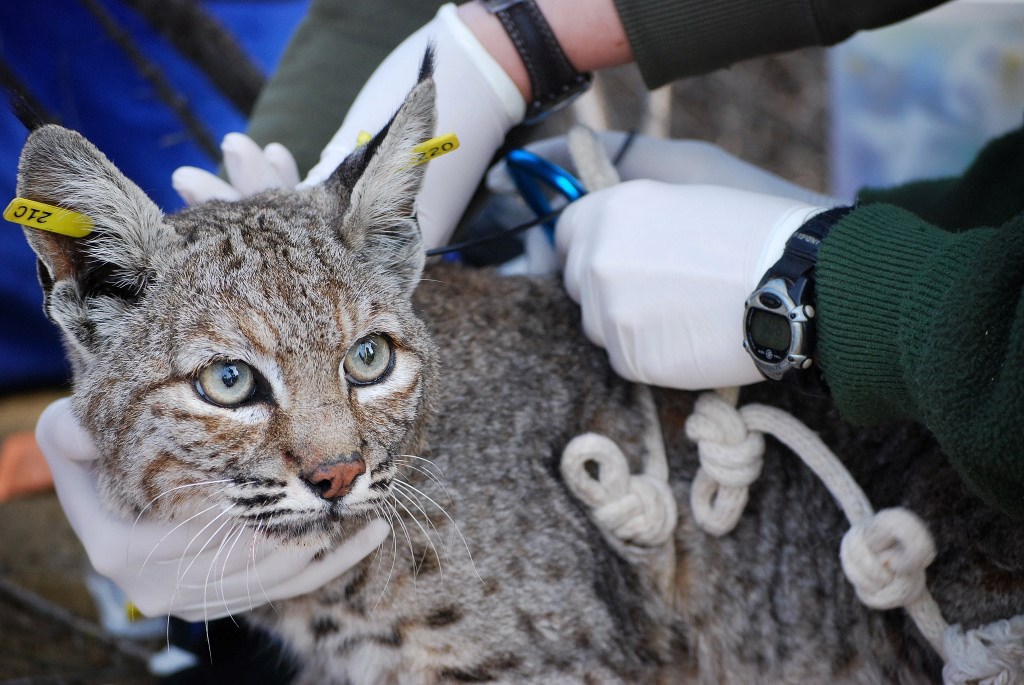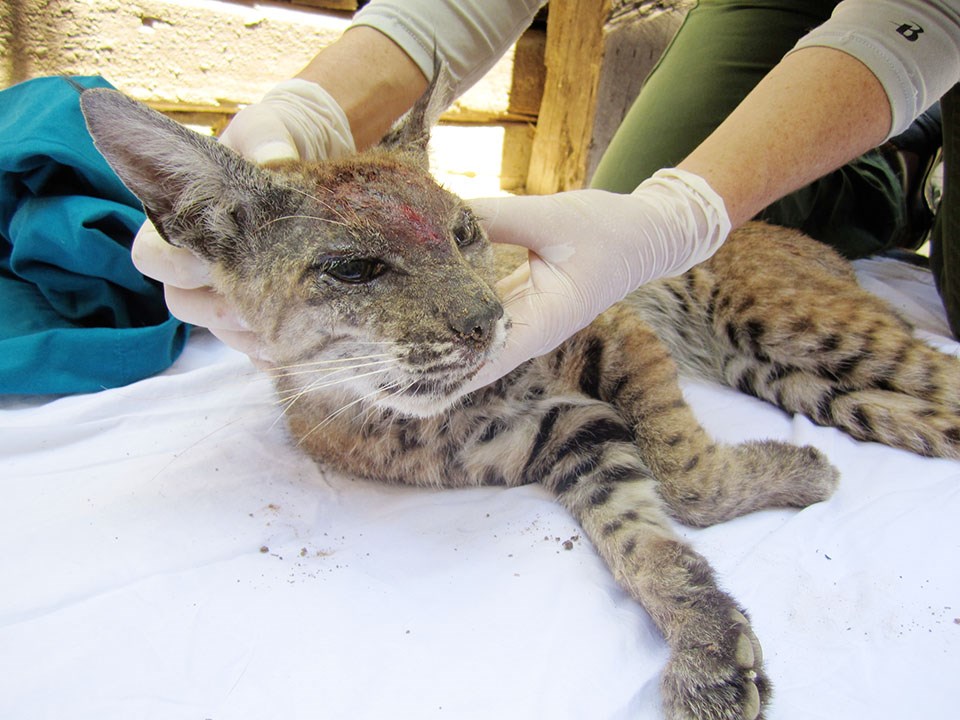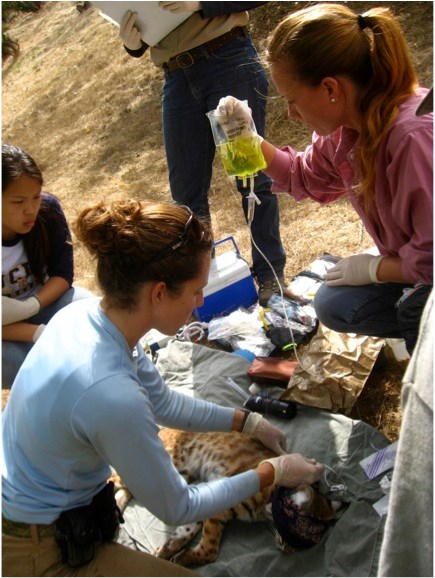Last updated: November 15, 2017
Article
Researchers Investigate Link Between Rodenticides and Mange in Bobcats

NPS
October 2017 - National Park Service wildlife biologists have been studying bobcats in Santa Monica Mountains National Recreation Area for over 20 years. In 2002, many of their study animals began dying of notoedric mange, a disease caused by a skin mite (Notoedres cati). The disease was thought to be mostly non-lethalㅡmange had only rarely killed wild cats in the past. Further investigation revealed a promising lead. Besides having mange, 100% of the dead bobcats had anticoagulant rodenticides in their systems.

NPS
Unlike rodents and many other mammals and birds, cats aren’t often killed outright by anticoagulant rodenticides. That leaves bobcats in the unusual position of surviving to experience whatever side effects long-term exposure might cause. Given the strong statistical link they had found, a state pathologist and park biologists speculated that high susceptibility to severe mange was a sort of rodenticide exposure side effect. Over the years, evidence piled up to support that hypothesis. Still, a specific explanation of how rodenticide exposure increases mange susceptibility remained elusive.
Laurel Serieys was a park wildlife intern in 2006, at the tail end of the initial bobcat population crash. She became hooked on trying to understand the unique issues faced by urban carnivores. Soon after, she began working with park biologists to study the link between rodenticide and mange as a graduate student at UCLA. Laurel sampled bobcats from a much wider area of the park than ever before, but more importantly she pioneered the use of immune health tests on a wild carnivore, specifically bobcats.

Laurel Serieys
As part of her dissertation work, she looked at blood samples from Santa Monica Mountains bobcats to see how rodenticide exposure influenced 65 different health parameters. She found that measures of immune system health were abnormal in bobcats with rodenticides in their systems. Some immune functions were being suppressed while others were working overtime. The latter indicates system-wide inflammation and possible immune exhaustion. Overall, the implication is that bobcats exposed to rodenticides have dysfunctional immune systems that may not be able to muster a targeted response to a disease like mange.
Devaughn Fraser, a current graduate student at UCLA, also had a look at some of Laurel’s bobcat blood samples. She used gene expression techniques, an exciting new avenue of genetic research that examines whether different genes are more or less active. Specifically, she hoped to see if rodenticides were linked to any changes in how bobcat genes are expressed, and if so, what physiological functions those genes were related to. Her results help to support and explain Laurel’s findings. Rodenticide exposure does seem to alter gene expression, including for a host of genes related to immune function. She also found that genes linked to promoting skin integrity are inhibited. Since mange is a skin disease, this could also help explain why it is so deadly for rodenticide-exposed bobcats.
Currently, Devaughn is working on another, more controlled experiment. She wants to know how blood cells from healthy, captive bobcats function when they are exposed to different toxicants. Specifically, she is testing gene expression in the cells:
- in the absence of any toxicants
- in response to an individual anticoagulant rodenticide
- in response to antigens (toxins) produced by mange mites
- in response to rodenticide and mite antigens together
Devaughn hopes to have results early next year. Her experiment should help us understand if rodenticides are the root cause of abnormal gene expression, or if there is just a close link. If they are the cause, the case for sticking with alternative forms of rodent control will be stronger than ever. The stakes are high for continued bobcat survival near urban areas where rodenticides are common. Laurel and park biologists found that 92% of local bobcats had rodenticides in their systems. Exposure begins before birth, and bobcats are repeatedly exposed throughout their lives. Furthermore, mange is unlikely to be the only now-deadly threat to the population.
Laurel’s and Devaughn’s research has implications that extend beyond bobcats as well. Since rodenticides move up the food chain, many other species from owls to mountain lions suffer from their effects. Visit the Santa Monica Mountains National Recreation Area webpages on bobcats, rodenticides, and how you can help for additional background and links. Also check out Laurel’s Urban Carnivores website for more Southern California urban carnivore research and information.
Prepared by the Mediterranean Coast Inventory and Monitoring Network.
